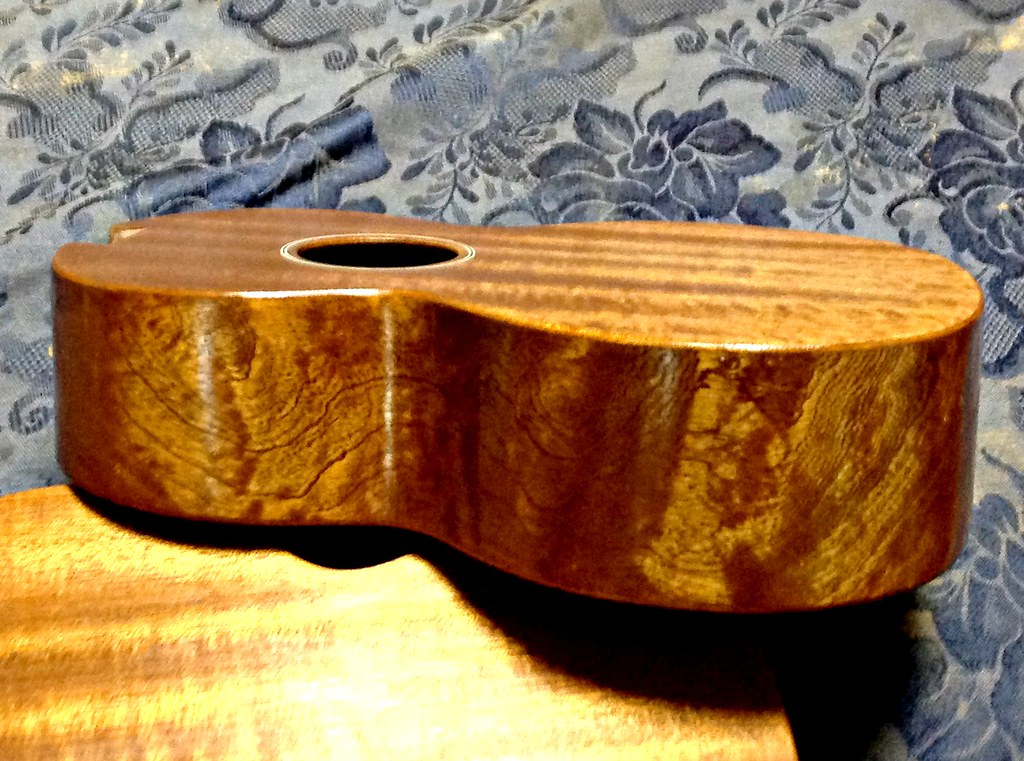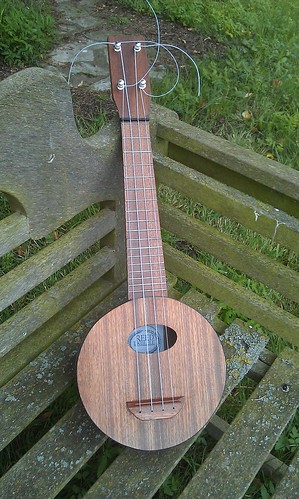Timbuck
Well-known member
Scientific Name: Entandrophragma cylindricum
Common Name(s): Sapele, Sapelli, Sapeli
Distribution: Tropical Africa
I always regarded this as a cheapish industrial type wood used in door frames and other comercial type uses .. I frequently use it for making linings, I ordered some billets of it from a guy on eBay and one of the billets had this strange curly pattern in it and no way could I use it for linings co's I was sure it would be too brittle..I only dug it out again as a test piece on my newly refurbished side bender..and I have now used it on a soprano and after the first couple of coats of FP the results are not quite what I expected... I'm amazed and I have another five sets like this out of the same block.
and I have another five sets like this out of the same block.
 IMG_1170 by https://www.flickr.com/photos/150702140@N02/
IMG_1170 by https://www.flickr.com/photos/150702140@N02/
Common Name(s): Sapele, Sapelli, Sapeli
Distribution: Tropical Africa
I always regarded this as a cheapish industrial type wood used in door frames and other comercial type uses .. I frequently use it for making linings, I ordered some billets of it from a guy on eBay and one of the billets had this strange curly pattern in it and no way could I use it for linings co's I was sure it would be too brittle..I only dug it out again as a test piece on my newly refurbished side bender..and I have now used it on a soprano and after the first couple of coats of FP the results are not quite what I expected... I'm amazed
 IMG_1170 by https://www.flickr.com/photos/150702140@N02/
IMG_1170 by https://www.flickr.com/photos/150702140@N02/
